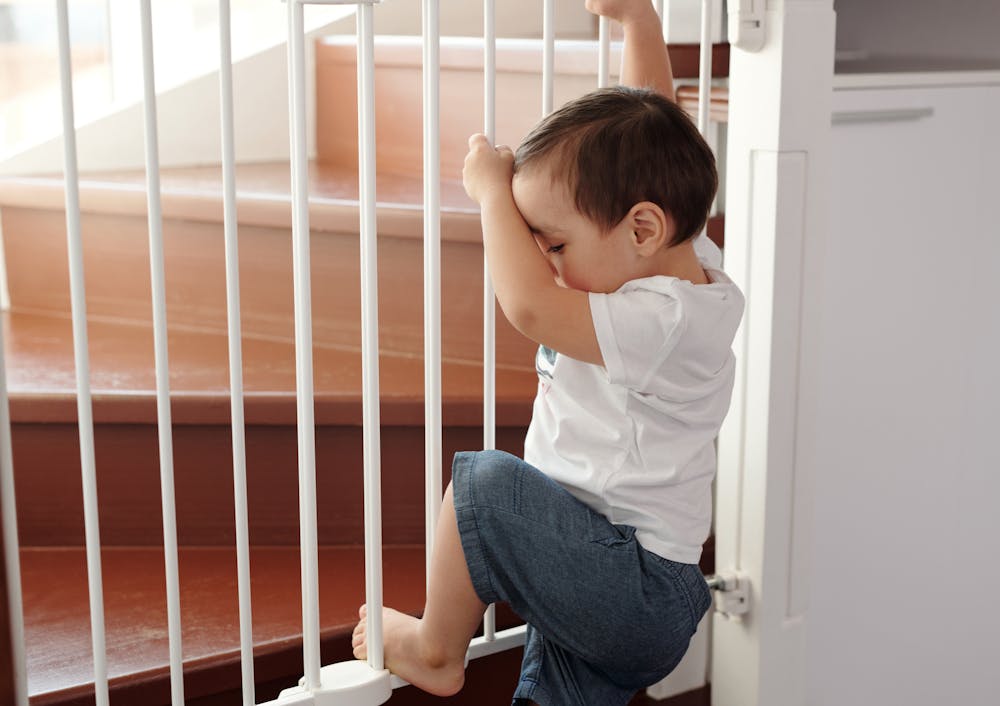Child-proofing your home transforms it into a fortress of safety for your little adventurers. As they embark on their journey of growth, from crawling to walking, every nook and cranny of your space becomes a land of discovery and potential danger. The essence of child-proofing lies in the delicate balance between fostering a child’s curiosity and ensuring their environment is devoid of preventable hazards.
By adopting a proactive approach, you safeguard your children from the obvious dangers and those lurking in the least expected places. As your child grows, it’s a continuous vigilance, adaptation, and learning journey. Discovering the best ways to create a haven for exploration is paramount. Keep reading as we share tips and insights to guide you in making your home a secure and nurturing environment for your family.
Understanding The Basics Of Child-Proofing
Viewing your home from a child’s perspective is the first step towards effective child-proofing. This means reaching their level to spot potential dangers like sharp edges, small objects, and accessible cupboards. Use corner guards on furniture, secure cabinets with safety latches, and ensure small items that pose a choking risk are out of reach. Awareness is key; recognising the everyday items that could become hazards is the foundation of a child-proof home.
Choosing The Right Flooring For Safety and Cleanliness
When child-proofing your home, the flooring choice is pivotal in safety and maintenance. Laminate flooring is a superior option, particularly for families with young children. Its smooth, hard surface is not only resistant to the scratches and dents that are all too common with little ones running around but also significantly easier to clean compared to carpets. Spills, crumbs, and dirt can be swiftly dealt with, reducing the risk of allergens, and keeping your home’s environment healthier. Moreover, laminate offers a stable footing for those tentative steps, minimising slips, and falls. Its durability and ease of maintenance make it an ideal choice for busy households looking to combine style with practical child-proofing solutions.
Securing Heavy Furniture And Appliances
Toppling furniture and appliances represents a significant risk. Use furniture straps and anchors to ensure the stability of bookshelves, TVs, and kitchen appliances. This prevents them from being pulled over and secures them in place against curious hands. Always attach heavy items to the wall or floor, particularly when children play or spend a lot of time.
Safe Storage Of Hazardous Materials
Children are naturally curious, which can lead them to explore cabinets containing cleaning supplies, medications, and sharp objects. Keep these items in high, unreachable places or cabinets secured with child-proof locks. It’s not just about being out of sight; it’s about being out of reach and locked away to prevent accidental poisonings or injuries.
Electrical Safety Measures
Electricity poses a unique danger in homes with young children. Cover all unused electrical outlets with safety plugs and keep electrical cords neatly tied up and out of reach. Opt for appliances with child safety features, and ensure that all electrical items in the home are in good condition, without frayed wires or other damage that could pose a risk.
Window And Stair Safety
Falls from windows and stairs are preventable accidents that can have serious consequences. Install window guards and safety gates at the top and bottom of stairs to block access. Use window locks to prevent windows from being opened more than a few centimetres, and consider installing a banister guard to prevent children from slipping through railings.
Water Safety In The Home
Water hazards are not limited to pools; bathtubs, toilets, and even buckets can pose a risk of drowning. Always supervise bath time, and consider installing toilet locks to prevent access. A non-slip bath mat inside the tub can help prevent slips, and keeping bathroom doors closed will further reduce risks.
Creating A Safe Play Area
Dedicate a space in your home where children can play safely. This area should be hazard-free and equipped with safe, age-appropriate toys. Regularly check these toys for damage or small parts that could become choking hazards. Good storage solutions keep the play area tidy and minimise the risk of accidents.
The Importance Of Supervision And Teaching Safety
While physical measures are essential, nothing replaces the importance of supervision. Being present and vigilant is the best way to prevent accidents. As children grow, teach them about safety to build their awareness and help them navigate their environment safely.
Regular Updates And Vigilance
Child-proofing is not a one-time task but an ongoing process that evolves with your child’s development. Regularly review your home for new hazards as your child grows and explores. Keeping up with safety standards and product recalls is also part of maintaining a child-proof environment.
Child-proofing your home is an act of love, creating a space where little ones can learn and explore safely. It’s about taking proactive steps today to prevent accidents tomorrow. With careful planning and vigilance, you can ensure your home is a safe and welcoming space for every family member, no matter how small.



